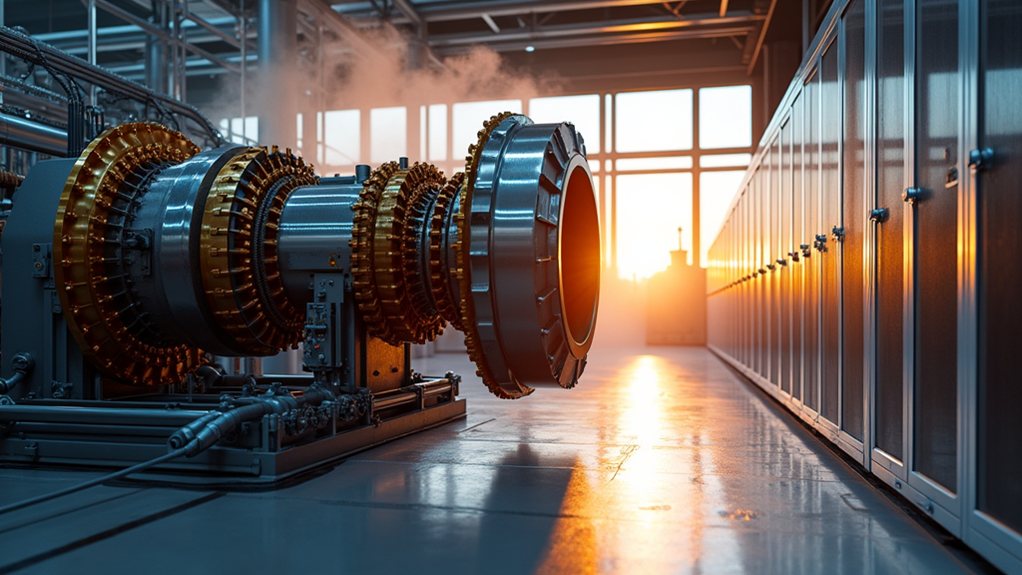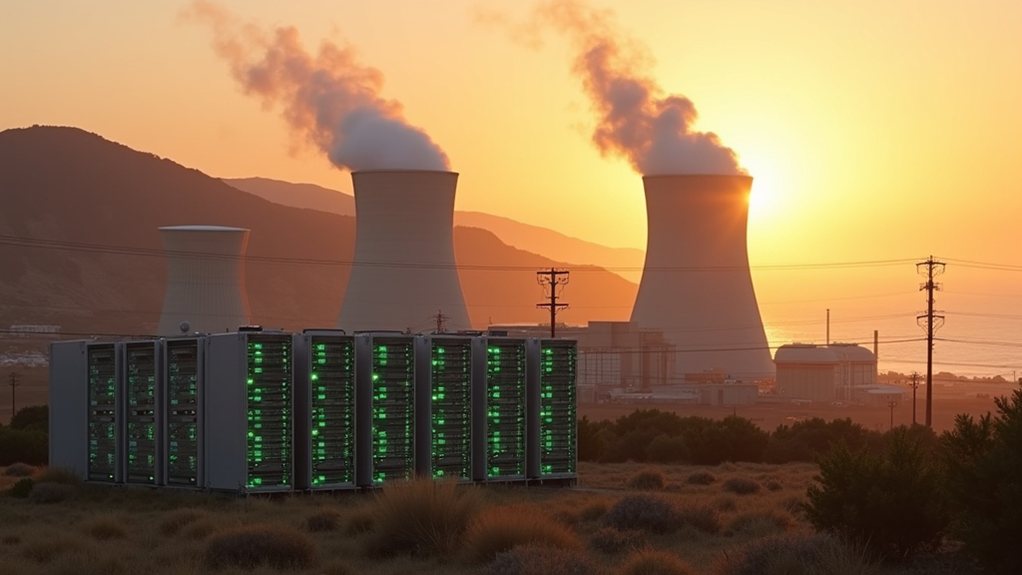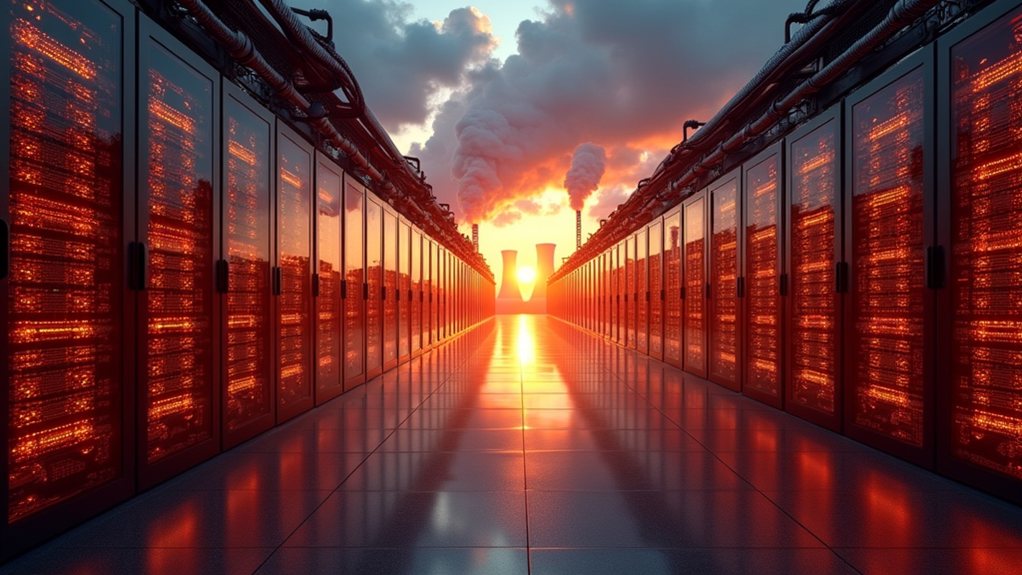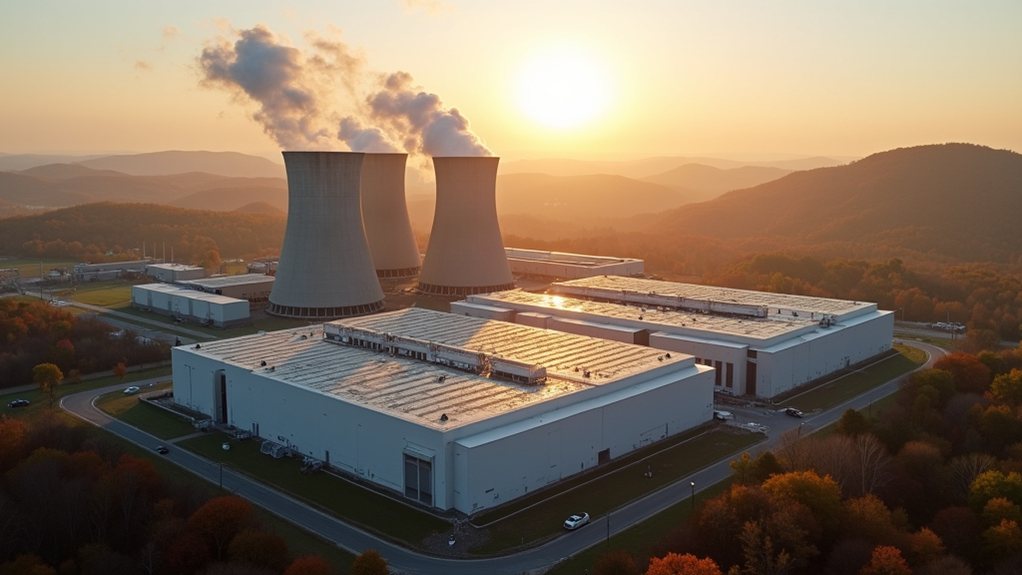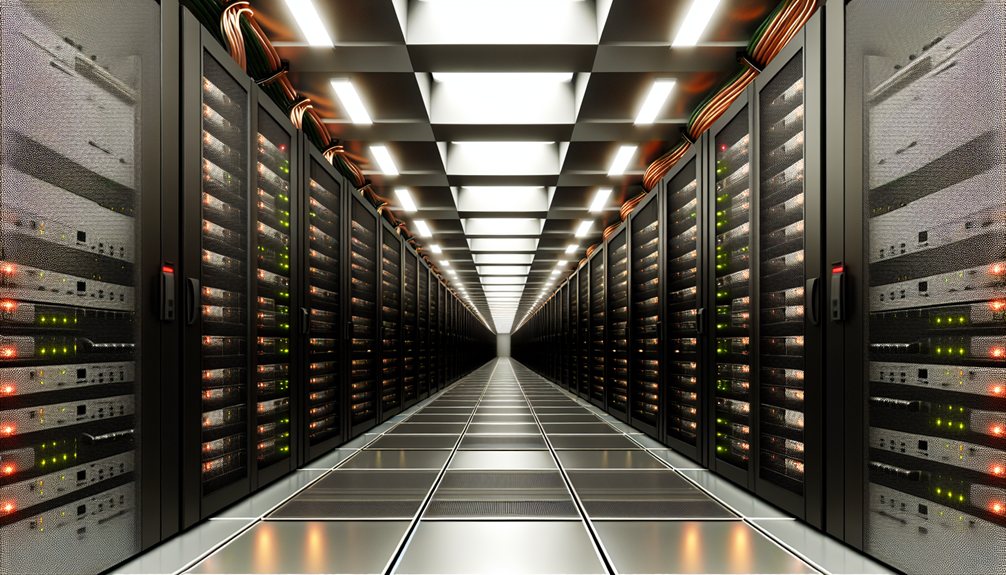Gas Turbines: OpenAI’s New Climate Compromise
While tech giants typically chase innovation at any cost, OpenAI’s Stargate project represents an unprecedented convergence of artificial intelligence ambitions and energy infrastructure challenges. The mammoth $500 billion initiative, partnering OpenAI with SoftBank, Oracle, and MGX, isn’t just about building smarter machines—it’s about powering them. And that’s where things get interesting. Or should we say, combustible.
Announced by President Trump in January 2025, Stargate aims to construct cutting-edge AI data centers across America by 2029. Impressive. Noble, even. But there’s a dirty little secret behind all that computational power: it’s energy-hungry. Really hungry.
Training large AI models demands electricity—lots of it. Add cooling systems to prevent these digital brains from melting down, and you’ve got yourself an energy crisis in the making. Traditional data centers simply can’t keep up.
AI supercomputers devour electricity like a digital Godzilla, threatening to short-circuit our power grid while barely breaking a computational sweat.
Enter gas turbines. Efficient? Sure. Flexible? You bet. They scale nicely and play well with existing infrastructure. The planned 4.5 GW power capacity expansion isn’t happening with solar panels alone, folks. With AI market growth projected to reach $1.81 trillion by 2030, the demand for power-hungry infrastructure shows no signs of slowing.
Here’s the rub: gas turbines emit greenhouse gases. Period. For a tech sector increasingly pressured to go green, this pivot is awkward. OpenAI’s sustainability commitments now look a bit… flexible.
The economic upside is substantial, though. Stargate promises over 100,000 new jobs across construction, operations, and supporting industries. Local economies will boom. America’s AI leadership gets a steroid shot. But at what environmental cost?
The carbon footprint of these AI factories will be massive. No amount of PR spin changes that fundamental truth. While renewable alternatives exist, they’re clearly not Stargate’s immediate priority.
The infrastructure buildout supports critical AI applications—medical research, defense systems, financial services. Important stuff. No one’s arguing that. But the pivot to gas shows the gap between Silicon Valley’s green promises and the brutal realities of building AI at unprecedented scale.
The initial $100 billion investment for the first phase in Texas demonstrates the sheer magnitude of this undertaking and its energy requirements. Some of the benefits are already visible as Stargate I facility in Abilene is partially operational with early training workloads already underway.
Maybe future phases will incorporate more sustainable technologies. Maybe. For now, though, OpenAI and its partners have made their choice. They’re betting that AI’s benefits outweigh its carbon costs.
The clock’s ticking on climate change, but apparently, it’s ticking faster on AI development. Funny how principles work when billions are at stake. The irony? The same AI being developed might someday solve our energy problems—if we haven’t cooked the planet first.
